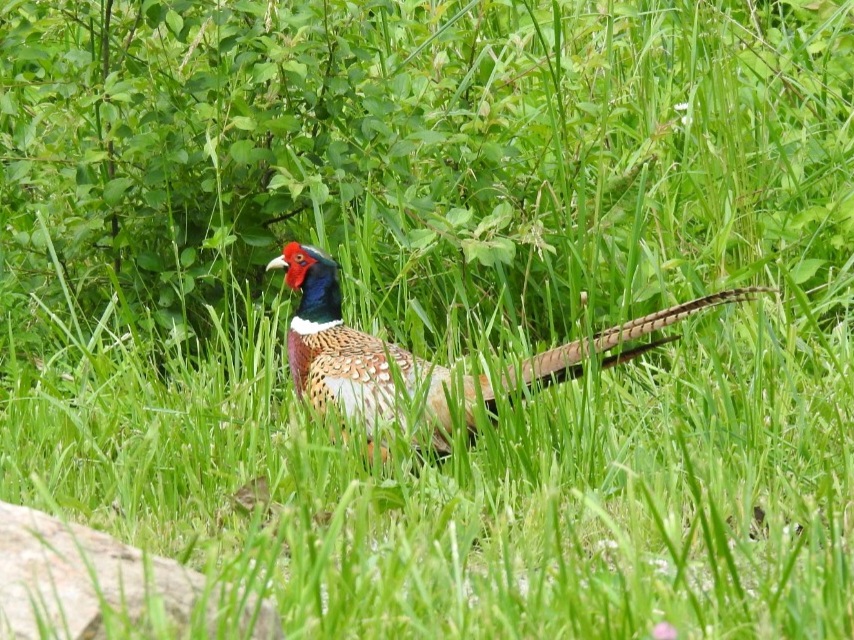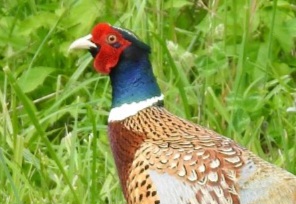Leonard Weber
May 27, 2024
Native to Asia, the Ring-necked Pheasant was introduced into the United States in the late 1800s and became a popular game species in many parts of the country.
The male (usually called cock) is distinctive, with a red “face” and a long tail.

This is the third straight May that the loud two-syllable crow of the cock pheasant can be heard quite frequently in Eliza Howell Park in Detroit. This crowing functions as a territorial claim, communicating with potential mates and warning away other males.
The pheasant is a bird at home in tall grasses and brushy woods, heard much more frequenly than seen. Each time I have seen a male, the observation has been short. They walk or run, rarely fly, but are able to disappear quickly into cover.
The much less colorful females are even more difficult to spot, and I have not yet seen any females here.
Recently, this year’s calling male appeared while Danielle Hawkins had her camera with her. This photo was enlarged to emphasize the red, blue, and white of the head and neck.

Danielle Hawkins
The wild pheasant population in Michigan probably peaked in the 1960s and has been in slow decline since. In recent decades, a bird long associated with grasslands and prairies and agricultural fields has found a home in Detroit, a city where a declining human population has resulted in more open areas with tall grasses and other plants. Pheasants are now doing very well here.
The sections of Eliza Howell Park devoted to perennial wildflowers and grasses provide possible nesting sites for this ground nesting species.

Another birding enthusiast visiting the park recently reported seeing the male pheasant chase away a Wild Turkey, another ground nesting species.
This may be the year that Ring-necked Pheasant gets added to the list of “birds that are known or probable Eliza Howell Park breeding species.”
Leave a comment